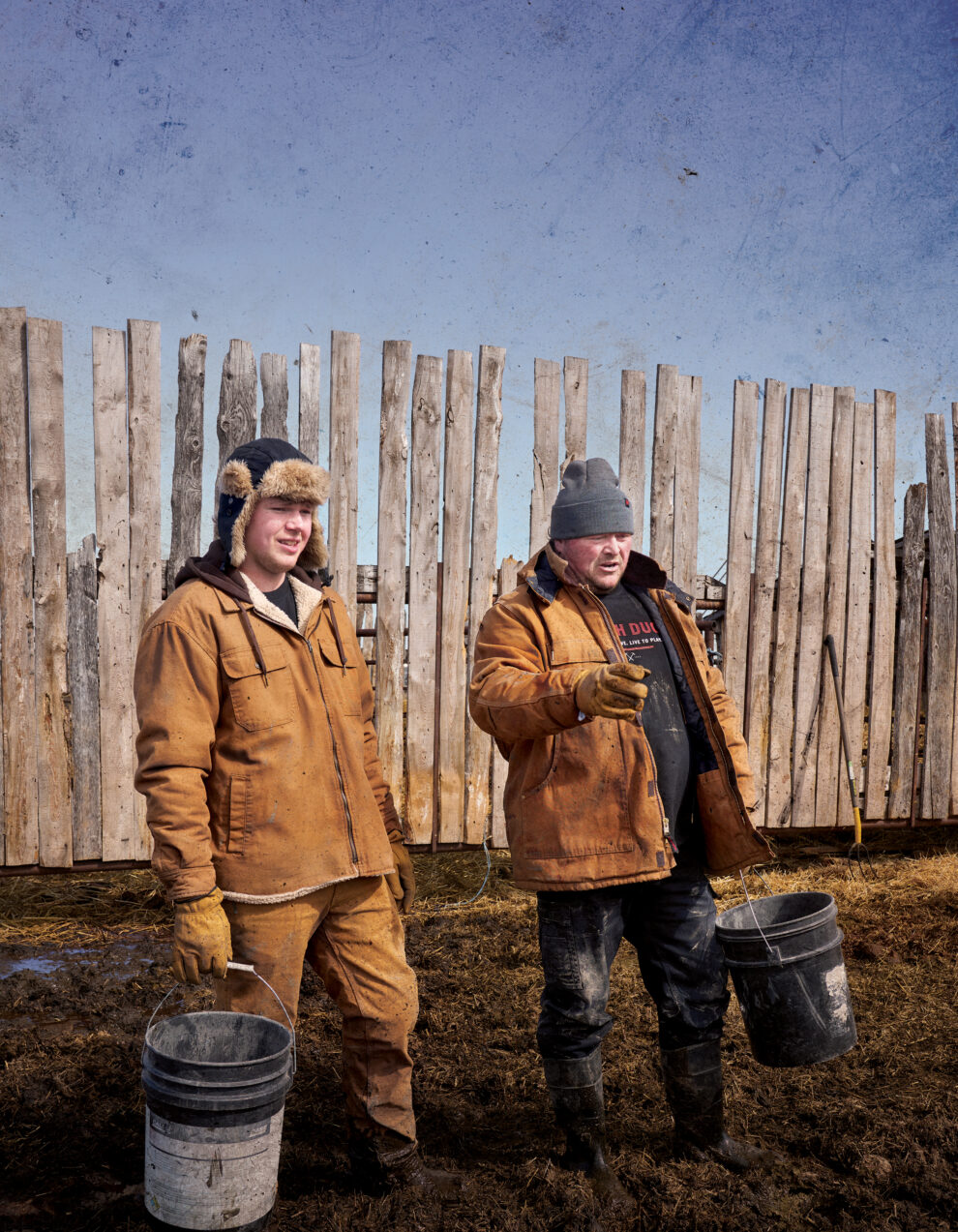By Angela Lovell
Like most industries in Canada, the apparel sector is facing strong headwinds from a volatile and chaotic trade environment generated by United States tariffs. Additionally, Canadian apparel sales have been decreasing over the past year, with women’s apparel sales (representing over 55% of total Canadian apparel sales) declining 3.8% in 2024 compared to a 1.6% decrease in men’s and 10.1% decline in juvenile apparel sales.
While fashion clothing may be taking a hit, other sectors are holding relatively steady. Gavin Rich, president of Winnipeg workwear manufacturer, Tough Duck, says that although the company is not immune from the chilling effect of the economy and tariffs, it has stable demand for its products and a strong brand.
“People cannot show up at worksites without wearing the proper PPE (personal protective equipment); they have to be CSA approved for safety, so when looking at the family budget, Mom and Dad have to prioritize their occupation and their jobs,” Rich says. “That means ours is a reasonably steady business, but with rising prices for everyday commodities and needs, and the general worry about the economy, there is a chilling effect and we feel it.”
The majority of Tough Duck’s sales are domestic, but a key strategy for the company is increasing sales to the U.S. It’s a strategy that Rich, who recently visited the company’s American distributors and retailers, says is not going to change.
“We have some strong footholds in the U.S. and have the right partners to work with, and our brand is starting to make headway, so we are excited about our brand there and the growth,” Rich says, adding that the tariffs are creating a level playing field because they affect everyone. “We are focusing on communication with our retailers, distributors and stakeholders and we are not stopping. We know things will settle down, and are focusing on the strength of our brand and our products.”
What about the sourcing side of the industry?
Although there are some clothing companies that continue to manufacture in Canada, around 90 per cent of the apparel sold at retail is made in China and elsewhere, even though many Canadian companies design and test their products at home. If these companies are selling all their products domestically, little has changed.
Shelley Ediger, owner of GarmaTech Inc. says the tariff situation hasn’t yet had too much effect on her business that offers a full product design and development service, mainly for small and medium-sized businesses, as well as cut and sew manufacturing at its Winnipeg facility and overseas. Most of Ediger’s clients are Canadian selling only in Canada, and although the company and its clients purchase most of their textiles overseas, little comes from the U.S. and a tariff of 18% is already levied on imports from China, so it’s pretty much business as usual.
But if companies are selling to the U.S., and are importing their products from China, in particular, that’s when the situation becomes more complicated.
“If a company manufactures its products in China and sells say, 40% to the U.S. and 60% in Canada, they won’t want to have a product sold in Canada costing significantly less than the same product in the U.S.” says Bob Kirke, executive director of the Canadian Apparel Federation. “So, companies are cost-averaging the tariff increases across their products to smooth out the difference in selling price. In this way, Canadian consumers are seeing price increases even though Canada has not increased its tariffs on China.”
But what are apparel companies doing to ensure they can weather the current climate and be successful in the long term? Are they changing their business strategies or seeking new suppliers or markets?
“The best companies are the ones who can separate the noise from the signal,” Kirke says. “They have been in this industry a long time and understand that you don’t just jump immediately based on every tariff announcement, but try to anticipate different scenarios and build redundancies into their plans. They are not changing their sourcing on a dime but building a roster of potential suppliers and figuring out a strategy if they do need to make changes in their sourcing based on new tariffs.”
Is Buy Canadian helping or hurting the apparel industry?
Meanwhile, the yo-yo-ing U.S. tariffs on Canadian products and President Donald Trump’s rhetoric about annexing Canada, has promoted an unprecedented wave of ‘Buy Canadian’ sentiment that’s a backlash to products made in the U.S. But given that few clothing products are imported into Canada from the U.S., and a majority are made in China or elsewhere, is that trend hindering or helping Canadian apparel companies?
Although Tough Duck manufactures its products overseas, Rich says that’s less important to its customers than the fact that the company itself is proudly Canadian.
“Apparel production is challenging in Canada, and for us it makes sense to manufacture overseas, but all the design and talent comes from Winnipeg,” he says. “We are a Canadian company, pay Canadian taxes and give back to the community. That’s a serious responsibility that we have and I think that’s a big part of why people support a Canadian company.”
Opportunity can come from disruption
Disruption in the market isn’t always a bad thing because it can spur more creative thinking and that can lead to new opportunities.
An example is the new product line that Ediger launched last year, Sew With Sero, that recycles waste fabric destined for the landfill into a complete DIY sewing kit with everything a person needs to sew a fashion clothing item at home, including step-by-step instructions. It’s a creative, eco-friendly and empowering solution that Ediger developed in part to address the challenge of skyrocketing shipping costs for new, imported textiles and also as an ongoing battle with fast fashion. She believes we will be seeing a lot more creative ideas coming from companies involved in international trade.
“Every barrier is just an opportunity to look in a new direction and think differently,” Ediger says. “We are nimble in how we position ourselves, and I am confident that eventually the current situation will be good for Canada and Canadian manufacturing.”
Rich agrees, and says being based in Manitoba is already a major advantage for Tough Duck that it can continue to build on.
“We have 360,000 square feet of distribution space in the middle of North America with good options to ship to the U.S., Canada and the world from Winnipeg,” he says. “That’s a real advantage for us.”
Winnipeg’s Garment Industry: A brief history
The garment industry in Winnipeg dates to the 1890s, but it wasn’t until the 1940s that it began to thrive thanks to wartime demand, mass production technology, good transportation links and reduced energy costs thanks to hydro-electric power. New marketing options also entered the scene, including the development of large department and chain stores and catalogue mail order companies.
Winnipeg manufacturers were largely producing work clothing but as mechanization (especially in agriculture) reduced the demand for labour, they began to diversify into consumer clothing lines including more casual leisurewear.
Then came the post war baby boom with its rise in consumerism that helped the industry expand. By 1962, there were 81 garment factories in Winnipeg and by the 1970s, the city was the third largest garment manufacturing hub in Canada.
Today, it still holds that position and employs around 5,000 people at more than 100 companies that are known for flexibility and for producing high-quality, value-added products for niche markets that are exported around the world.









